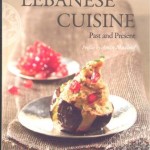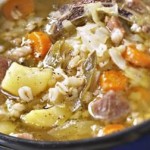A little while back I wrote about a short but unexciting experience in Algeria. Come to think of it, North Africa was never one of my happier hunting grounds in my working days, whereas I had some most interesting and occasionally lucrative assignments in the Eastern Mediterranean and the Arabian Gulf. One job in Morocco, though, deserves a book to itself… and it was a book, or rather TWO very large books that first introduced me to the country. Esoterically titled “Traditional Islamic Craft in Moroccan Architecture”, they sounded much more dry and specialist than they really were. They were the work of a French “Mr Fixit” who had fitted himself out as an architect/adviser-cum-supplier to King Hassan II of Morocco; an amazing man named André Paccard – look him up on Google, it’s worth it!
Whatever H.M. the King wanted, Paccard supplied it – whether it was fine French foods, machinery, household furniture and furnishings, jewelry or, in one case, 24 purpose-built villas for VIP foreign visitors invited for a royal celebration. But his jewel in the crown, so to speak, was to be two de luxe books about the mosques of the country. They would be a tribute and “thank you” to the King for his patronage. To do this he was facilitated to travel all over Morocco, photographing mosques old and new, grand and tiny, city-based and rural. But they provided much more than architectural and background photography and information; they recorded and graphically demonstrated the traditional Moroccan crafts that seemed doomed to die out, forgotten and unrecorded – stone work, tiles decorative and constructional, wood crafts of many kinds, pottery, glass and glassware, calligraphy and illuminated scroll-work – indeed every aspect of traditional Moroccan arts and crafts.
The pictures were stunning and, having been royally sponsored it was good business for Monsieur André Paccard, the author/publisher.
The two beautiful volumes, each of 500 pages, were originally published in 1980. A few copies may be had from various international booksellers at prices ranging from US$525 to $1,500. I am rather sorry I sold my set when we moved from England to Cyprus in 1991 for $200!
André Paccard had some years of success as a royal servant – eventually, for various reasons (over-reaching himself, perhaps; usurped in his work by some jealous employees, certainly, he fell from favour. After losing most of his assets, he died in the South of France in 1996, an embittered alcoholic. When his business was liquidated, I was left with several hundred copies of his master work. His French business associates didn’t want to know about these, so I was able to sell them off, slowly over about three years, to schools, universities, libraries and other institutions. Ultimately it became a “nice little earner”.
My second time in Morocco was on behalf of an American multi-national. I was there four days – and it rained the whole time. What I was able to see through the down-pours suggested to me that this was, is, a lovely country. Despite the torrential rain, we ate well in some of the best restaurants in Marrakech. The food was stylish – French, African and Arab influenced. It has some interesting recipes of its own, of which these are a couple, adapted from a delightful and practical small paperback, the cover of which is shown below.
Some new and second-hand copies are available from Amazon. If you are exploring regional cookery and want a very good starter volume with a varied range of recipes and ideas, it is well worth buying. Brand new tagines in which to make lovely North African “casseroles” are widely available, in many stores and on-line.
RECIPES
Chicken with Prunes and Almonds (Poulet aux Pruneaux et aux Amandes)
The French absorbed a number of dishes from the Moroccan cuisine into their repertoire, but oven baked foods cooked in utensils called tagines (a contemporary Moroccan-made example of utterly traditional shape is pictured above) have not become a part of their cooking in the way that couscous has, probably because combining fruit with meat is something they do only rarely. However fruit can be an excellent complement to meat and I have a liking for the dishes called tagines, like this one, which bring the sweetness and soft texture of fruit together with meat.
Preparation: 20 minutes. Cooking: 1½ hours
CHICKEN TAGINE – Ingredients for 4 Servings
1 chicken weighing about 1½kg /3 Ib
2 large onions, peeled and finely sliced
4 or 5 tbsp ground almonds (* See Note)
3 tbsp olive oil
20 prunes, pitted and soaked for 2 hours 1 tbsp mild paprika
Salt Pepper
1. First of all, soak the prunes in cold water for a couple of hours before you begin
to prepare the rest of the dish.
2. Rinse the chicken, cut it into small pieces and set aside.
3. Brown the onions, which should be very finely sliced, in a frying pan and then add the chicken pieces.
4. Once the chicken is tender, transfer it and the onions to a tagine or casserole, add the prunes, salt, pepper, paprika, the ground almonds and enough of the water in which you soaked the prunes to cover all the ingredients.
5. Stir well, then cover the pot and allow the stew to simmer over a low heat for one hour.
Serve in the tagine.
Note: For the best taste use fresh Cyprus almonds, peeled. Pat them dry and then whizz them in your food processor until they are finely chopped. Make them creamier if you wish by blending longer, but I prefer them with just a little “bite”.
Chicken with Lemon and Olives (Poulet au Citron et aux Olives)
Preparation: 20 minutes Cooking: 1 hour
Ingredients for 4 Servings
1 chicken weighing 1½kg/3lb
3 preserved lemons, cut into thin slices (see Note)
3 tbsp vegetable oil !
1 onion, finely chopped
3 cloves of garlic
200g/7oz purple olives, pitted
A thread of saffron (or half tsp of saffron powder)
A bunch of coriander (or parsley, if you don’t like coriander)
Salt and pepper
Method
1. Cut the chicken into pieces, brown them in oil in a large pan and put to one side.
2. Add the onion, garlic, saffron, salt and pepper to the same pan, stirring over a medium heat for 5 minutes before returning the chicken pieces to the pan together with enough water to cover all the ingredients.
3. Continue cooking, covered, until the chicken is tender, which should take about 45 minutes.
4. While the chicken is cooking, blanche the olives in boiling water for 5 minutes and, when the chicken has cooked for about 30minutes, add them and the slices of preserved lemon to the sauce.
5. Scatter over the chopped coriander just before serving.
PRESERVED LEMONS – Making ‘em and using ‘em
Preserved Lemons can be found in some Deli counters. But they are simple to do yourself, but remember you need to make them a couple of weeks before you intend to use them.
Preserved Lemons Recipe
1. Select firm, fresh, unwaxed lemons.
2. Trim the nubs off both ends of each lemon.
3. Cut the lemon as if you are going to cut it into four pieces, but don’t complete the cut.
4. Put a teaspoon of salt in the bottom of a half-litre/pint-sized jar.
5. Put another teaspoon of salt into the quartered lemon.
6. Push the lemon into the jar, open end down, and push hard to squash it a bit so as to release its juices.
7. Put a teaspoon of salt over the top of the lemon.
8. Repeat the process, putting a teaspoon of salt inside the second lemon, and then squash it down hard on top of the first lemon.
9. Add another teaspoon of salt on top of the second lemon, and repeat the process for the third and final lemon. Add a teaspoon of salt on the very top. The jar should be halfway full of lemon juice from having compressed the lemons. If needed, squeeze some extra lemon juice into the jar to bring it to the halfway point. And don’t waste that lemon – cut it up and stuff it into the jar.
10.Now pour some water that’s been boiled and cooled (sterile) into the jar to fill it up the rest of the way. Repeat this process for however many jars you wish to make.
11.After you add the water, screw on the lid and let the jar sit at room temperature for 3 days, giving it a shake and turn it upside-down/right-side up a few times a day.
12.After 3 days place the jar in the refrigerator and let it sit for at least 3 weeks before using. Keep the jar in the refrigerator.
NOTE: Whatever dish you use them in, discard the pulp (it’s the peel that is used) and thoroughly wash the peel to remove excess salt.








HOMING PIGEONS, MILLION DOLLAR RACE-HORSES, CELLARS and VINES
For more than 50 years I have taken a camera with me on trips; short ones and long ones. Far more than a diary (especially if captioned properly) photos bring back people and places that have almost faded from memory. Today, of course, keeping a picture collection is easier than it ever was because all the images can be kept on a computer (making sure, of course, that they are all carefully copied on to a separate disc, in case of accidents). Of the pictures on this page, four are mine and the vines and beef photos are library.
Pigeons
A great sporting pastime of the English, especially in the industrial cities of the north, is the breeding of what are called “homing pigeons”. These birds are trained to be taken away from home and then, by instinct, to find their own way back to their “residence” (“loft”). They are often taken considerable distances away – even across the English Channel to France. The majority do find their way back successfully. Here are two men at the point of releasing their pigeons, to fly back home 25 kms away.
I took this in 1991 in the West of England. I understand bets are taken on which pigeon gets home first.
Until we could find land away from our house in the Troodos foothills, we kept the unwanted donkeys we had “collected” close to home, like on a plot next to the house. Sometimes the noise they made woke us up extremely early. In 17 years, almost 400 came through our gates. We first encountered these delightful animals when we were newly arrived. Across the road from the house we were renting was a mother and foal, pictured below – it was one of the first photographs I took in 1991 when we settled in Cyprus. After a few years, the young one became unwanted and came into the sanctuary we had by then started, where it was later adopted by an English woman then resident in Cyprus. Eventually she returned to England and had “Petal” as we called her and another donkey transported across Europe in a horse-box trailer. By an amazing coincidence, she now lives a kilometre away from us in England! So we are able to see our former donkey whenever we feel like it.
As well as lots of donkeys we also had a great many pigeons, attracted by easy access to the barley in the donkeys’ food bins. Faced with a surfeit of these birds, we arranged a “cull” and reduced the number by about a hundred.
I phoned a French restaurant in Limassol to see if they were interested in offering them to their customers. They happily accepted and a day or two later I delivered the birds, which had been plucked and prepared for the table by a fellow foreign resident in the village who had great experience of game birds and butchery. However, the Cypriot customers were not attracted and none was ordered. We froze them and used a fair number in pies, terrines and stews. The only meat on them that was really worth-while was the breast, which was a nice firm, close-grained, gamey bit of meat.
On a trip to Saudi Arabia, when we were lucky to get a visa for my wife, who is very fond of horses,
we were invited to the stud and farm of a very wealthy Sheikh, to have a look at the mares, stallions and racing animals, most of which were valued in millions of Dollars. We sat, cross-legged, on fine Turkish carpets and the thoroughbred creatures were brought past for our inspection.
From the heat of the Arabian desert, to a cold cellar in Austria in deep mid-winter, in the 1990s..
Contracted to re-popularise Austrian wine in Britain, as part of our education and indoctrination, we went on a delightful “research” programme, visiting winemakers and sampling wines. The days were cold, but the inner man and woman were warmed by the country’s delicious sweet wines. On one day, we tasted 67 wines and were quite merry at the end of it, because no facilities were offered to “spit out” (eject) most of the wine tasted. Our guide and driver handsomely enjoyed all the wines and hurtled us along the icy roads to the next winery at high speed. This photo is taken in the cellars of one of Austria’s finest wineries, with the owner/winemaker Willi Bründlmayer. (My camera, but not me taking the photo)
Below: Bründlmayer’s vineyards in the Langelois hills north-west of Vienna.
You can have fabulous wine and food tours in Austria. The cooking is good, too, though rich. The great beef dish of the country is called Tafelspitz and I give the recipe below. It’s very similar to the old English dish (with its song of the same name): Boiled Beef and Carrots.
Tafelspitz Recipe – Ingredients
325 g/1.5 lb beef topside (or other quality boiling beef, such as center cut rump,
Chuck beef or brisket) plus some beef bones, if desired
· 3 large carrots
· 1 large parsnip
· 1 small celery root
· 1 leek cut in half
· 1 large onion with skin
· 1 – 2 bay leaves
· a few peppercorns
· salt
:
Method
1. Slice the unpeeled onion in half across and turn the cut side in a non-stick pan until fairly well browned.
2. Put about 3 litres of water into a large saucepan.
3. Add the root vegetables, leek, halves of onion, bay leaves and peppercorns and bring to the boil.
4. Add the washed meat and bones and, depending on the type of meat, allow to cook until softened, in gently simmering water, which will take around 2 ½ – 3 hours.
5. Meanwhile add more water as required and skim off any scum which comes to the surface.
6. After at least two hours, season well with salt.
7. When the meat has softened, remove it from the pan and keep it warm in some of the liquid from the soup.
8. Season the remainder of the soup again with salt to taste, and strain it, if preferred. Serve with semolina dumplings or frittata and freshly chopped chives as a starter.
9. Slice the boiled beef by carving across the “grain” and put the pieces on warmed plates. Alternatively, you may serve it in the hot soup in a suitable bowl or tureen.
10. Serve with roast or sautéed potatoes, a bread-crumb and grated horseradish mix, green beans in a dill sauce, or creamed spinach and chive sauce.
11. If the root vegetables are to be served at the same time, cook some of them separately to be served al dente.
Cooking time: approx. 2 ½ – 3 hours
**************************************************************************
And a rare day in England. A long lunch outdoors, with fruity chilled white and rosé wines, for once uninterruptedly enjoyed without rain! Accidentally, the picture resembled a 19th century French water colour!